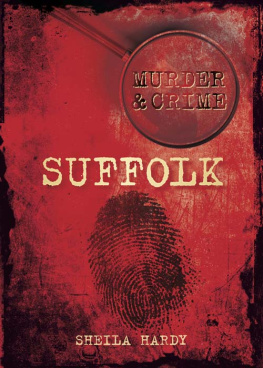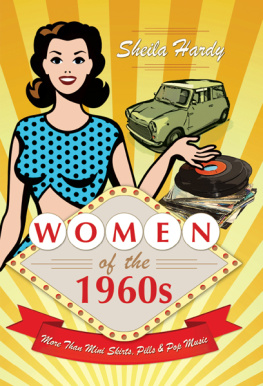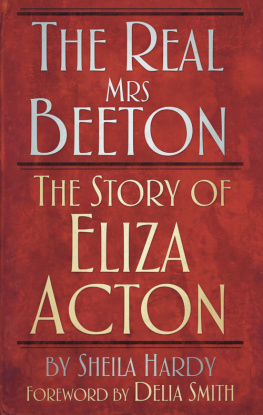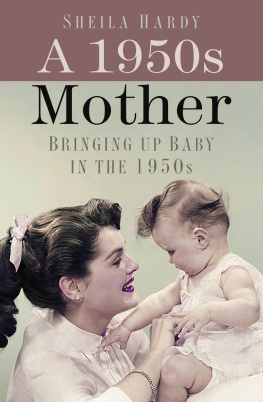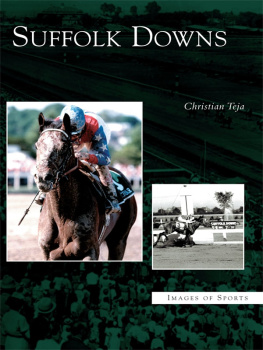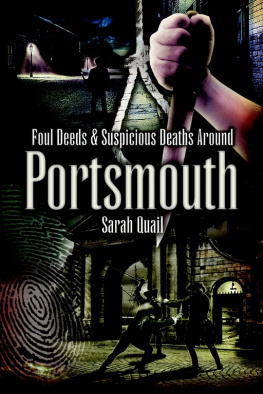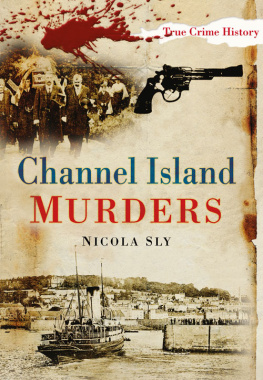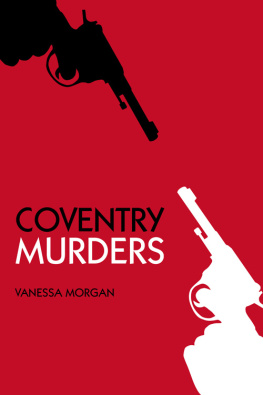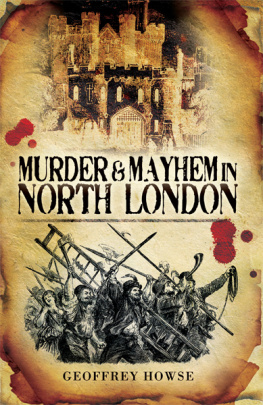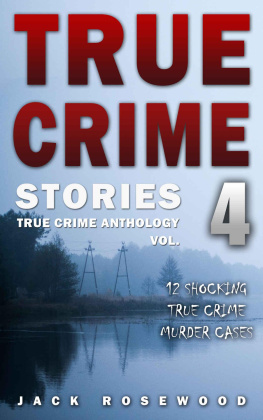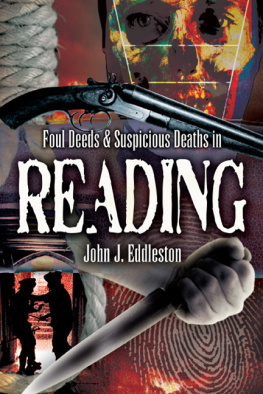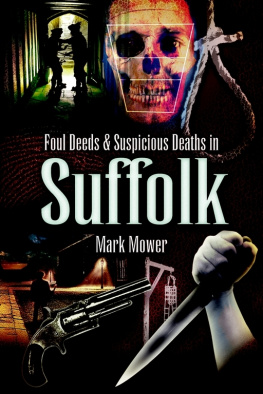For Rachel and Paul.
CONTENTS
The Execution of Edmund Thrower, 1812
The Shocking Neglect of 6-Year-Old Mary Ann Smith
The Case of Elizabeth Squirrell
The gross assault of 13-Year-Old Henrietta Ship
The Trial of Robert Goddard, 1856
The Case of William Bear
Sheep Stealing at Elmswell
A Case of Excessive Drinking in George Street, Brandon
The Case of a Criminal Lunatic
The Acquittal of John and Sarah Starling
The Reprieve of Ada Brown
As always, this work could not have been completed without help, so my very sincere thanks go to: David Burnett of the Sudbury Museum and Heritage Centre, who so readily gave his expert knowledge and offered the use of illustrations; Steve Williams, who also took trouble to search out and supply suitable background photographs of Stowmarket; Berkshire Record Office, which kindly provided the information about Broadmoor Hospital; the Suffolk Record Office, which again made many documents available to my most valuable researcher, Rachel Field without her, much of the painstaking detail about the lives of some of those mentioned herein would have been lacking. My debt to her is enormous. As it is to Michael, who not only ferried me around the countryside to visit the locations of the various crimes mentioned, but also took many of the photographs and listened to me as I speculated on the various cases I have uncovered.
I really do not understand the publics obsession with crimes of the past! You could almost hear the woman in the bookshops sniff of disapproval. Then, perhaps remembering this might not be quite the remark to make to the author of such a volume, she conceded, I much prefer your proper history books.
Fortunately, another obsessive appeared with one of the offending books for me to sign, so I was saved having to explain that these true crime accounts are indeed the very stuff of real social history. It is through recording what went on in criminal trials during the eighteenth and nineteen centuries that we learn a great deal more about the everyday life of our ancestors than any history textbook can tell us. Instead of generalisations about the state of the country, we get to see real people from all walks of life, their lives exposed in court as they account for whatever crime they were accused of committing. But it is not just the prisoner who is the focus of our attention; the witnesses who are called to testify to the guilt or defence of the prisoner also shed light on aspects of daily life. Thus we learn, for example, about housing conditions which give such intimate details as sleeping arrangements in crowded homes with their very basic toilet facilities. And with these details, we can trace the improvements both in building and hygiene as the centuries progressed.
Each of the accounts in this book has been chosen not just because it was an eye-catching case, but also for what it tells us about the attitudes prevailing at the time. We are brought face-to-face with the stark reality of acute poverty among working families, which could result in the man of the house being driven to crime in order to feed his children. But we also see that the effects of worry and over-exertion could lead to ill-treatment of wives and terrible cruelty to children.
These accounts also remind us of the status of women at that time. A married woman was unable to act in her own right; in one case, it was mentioned in passing that a woman had been left a small inheritance but could not receive it without her (missing) husbands signature on the document, while in another case a mother was told that her husband, not she, must seek the required document necessary for Poor Law assistance.
The dreaded Poor Law crops up in many of the cases. By the mid-nineteenth century, the problem of financing the system had become so acute that it was necessary to make cuts wherever possible. Where once it had been the norm for a man to apply for, and receive, assistance to help his family over a difficult period, with the understanding that the loan would be paid back when possible, outdoor relief, as it was known, was now almost impossible to claim. Instead, the whole family was sent to the workhouse, where those who were able to would work until they earned sufficient money to eventually release the family. The stigma of having to resort to the workhouse grew at this time, leading many to turn to crime rather than face that prospect. Often those who had no other alternative were young, pregnant women. It had become increasingly difficult as the century progressed to track down putative fathers and present them with orders to pay towards their childs upkeep.
The opening up of the railways and the prospect of employment elsewhere, led many men to move away rather than accept their responsibilities. The courts regularly dealt with cases of girls, usually servants, who, having managed to hide their state from their employers, then gave birth in secret. Horrible details emerged of girls deliberately strangling the child and then hiding the body in one case, this was done in the fire space under the copper. Girls who had no other option went into the workhouse to have their babies and stayed for the first few months with their child, before leaving to take up employment.
Two further types of crime dominate the press accounts in the second half of the nineteenth century. One had its roots in the industrialisation of agriculture, bringing labourers the very real fear that they would be replaced by machines. They thought the only way they could take reprisals against their employers was by setting fire to farm buildings and valuable grain stores.
The second type of crime was rape, and here we get an example of double standards. Where the case involved a grown woman, it becomes apparent that more often than not the jury took the view that she was a willing participant, and the man would get off. Consequently many cases were never reported. However, it was a different story when the plaintiff was a girl of thirteen or under. During the Victorian era, there had grown almost a cult surrounding the sanctity of childhood. That was fine for the middle classes upwards, but among the labouring classes, girls of twelve and thirteen were in many cases already working, many as maids in middle class households. When a learned judge expounded his disgust at hearing of the rape of a barely teenage girl calling her a mere child he was overlooking the fact that many of her compatriots were adding to the growing number of prostitutes in the towns and cities.
We tend nowadays to accuse the Victorians of double standards, but there is no doubt that there was a deep concern about the laxity of moral standards generally. Spurred on by social reformers, both within and outside the Church, Parliament was forced to take measures to improve life for those most in need. Foremost in this was the desire that everyone should be literate brought about by the introduction of compulsory elementary education. In urban areas, new housing developments replaced overcrowded unsanitary courts, introducing better living standards; but, in spite of the efforts of the Temperance societies and the Salvation Army, the demon drink had yet to be beaten. Cheap alcohol and strong beer filled an empty stomach and temporarily blotted out problems, but in some it led to a loss of control leading to abusive behaviour within the family and crime outside it; unprovoked fights and muggings could, in turn, lead to murder.
Selecting the items for this collection has been a voyage of discovery. We tend to think of Suffolk as a purely rural area engaged in raising food, both crops and animals, to feed the country as a whole, with the port of Ipswich dispatching cargo bound for other British ports and across the continent. Ipswich also had a varied industrial manufacturing scene. Those who remember being taught about the canal system and its importance to the Industrial Revolution can have no better example of its impact on Suffolk than in Stowmarket, where the opening of a navigable system led to a number of flourishing businesses including the factory producing explosives. Sudbury too had its fair share of industry, mainly of course the silk factories, but who would have thought there was once also a flourishing crayon factory there?
Next page
